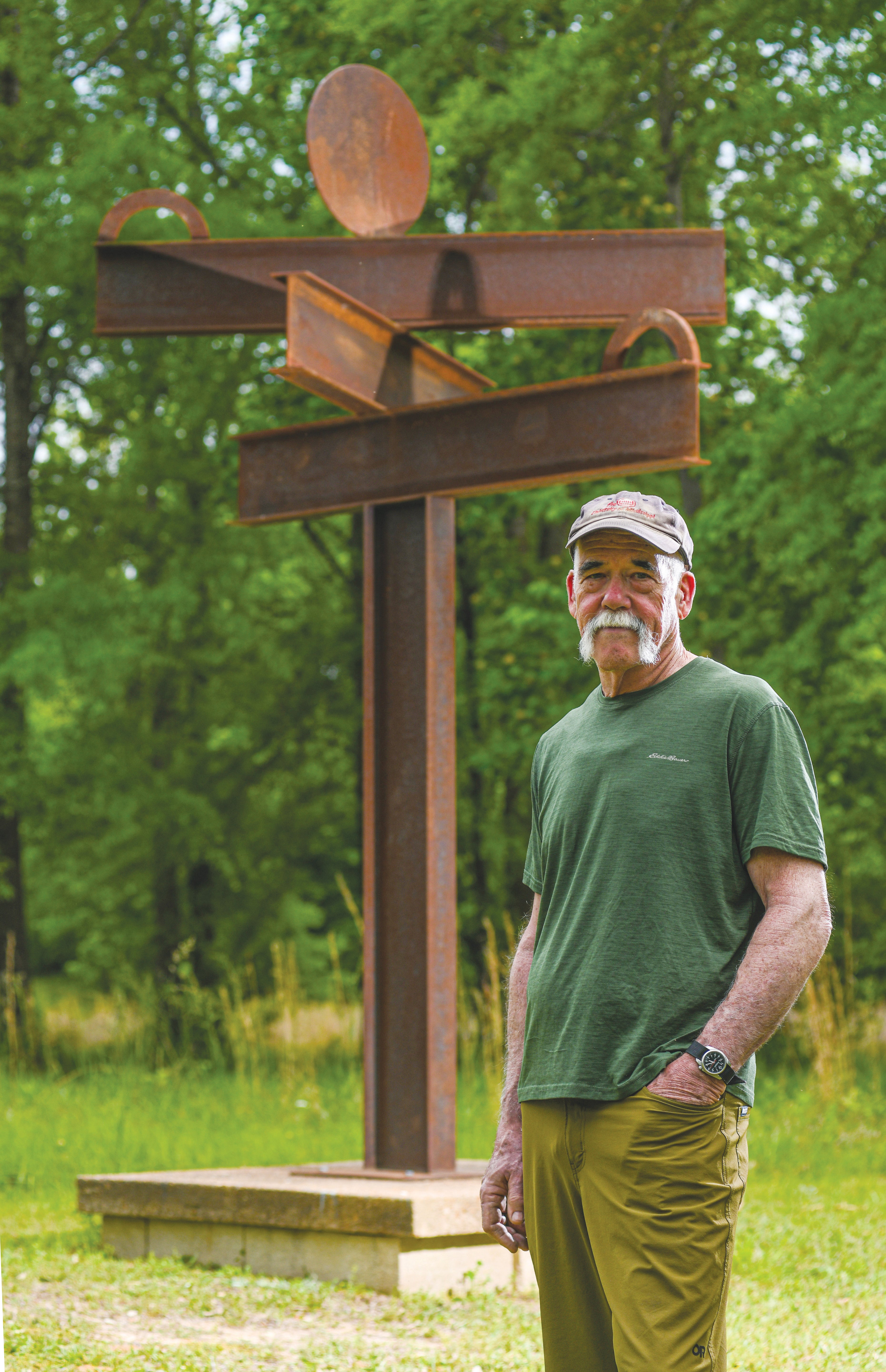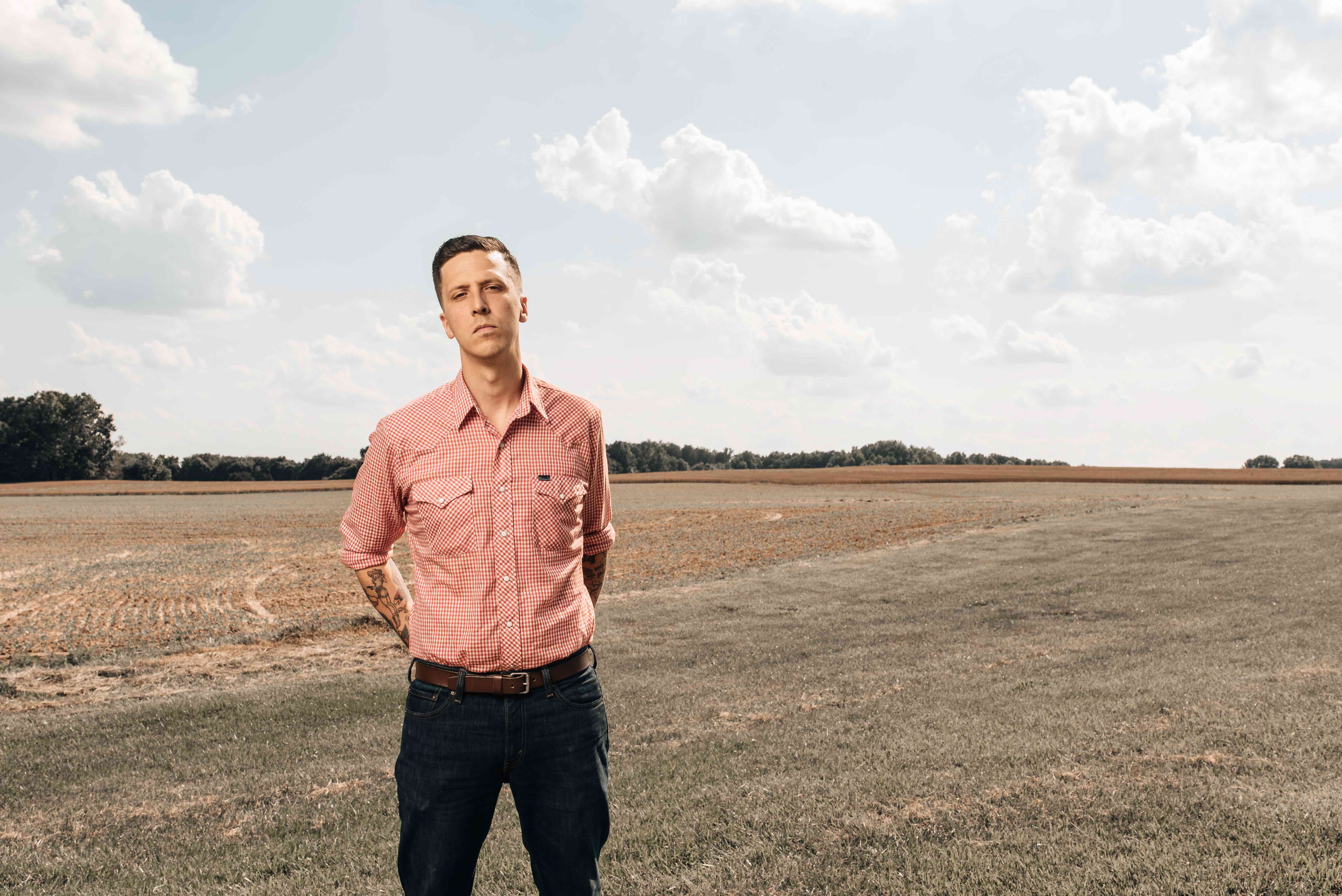By Julie Mabus
I’ve known Walter Neill for over fifty years. We grew up in the same town and went to the same high school. Walter was a good-looking kid and played high school football. Therefore, he had all the “correct” social trappings for a northeast Jackson boy. Both his parents were physicians–Walter, Sr., one of the first neurosurgeons in the state, and Karleen, an internist. On the surface, Walter was slated for normalcy in a traditional Southern family. That was not to be his path.
Signs of Walter’s non-conformity probably showed up at an early age, but in all likelihood, his parents missed it. They were managing two high-stress medical careers and four very precocious children. “I remember Mother always wanted me to play with the other little boys on the peewee football team. I was big and plenty fast for my age, but I just wasn’t interested. ”
Walter’s older brother Cooper crept into his conversation as he spoke of his childhood. I don’t think I ever got into trouble, but Cooper would often lead me into his misadventures, and somehow I always got the blame.” Walter smiled as he added, I think that’s why my parents sent me off to Christchurch School in Virginia for my ninth grade.”
Walter was absolutely miserable being away from home that year. “I remember making a bargain with Mother. I told her if she let me come home, I would play football in the tenth grade. It worked.”
To play football at Murrah High School in the 1960s, a working knowledge of head coach Jack Carlyle was essential. “From the beginning, Coach Carlyle didn’t like me.” Walter had never played football, and when he showed up for his first practice before tenth grade, he was wearing Sperry Topsiders. “Carlyle asked me what position I played. I had no idea and told him so.” Walter started laughing. “And when he asked me, ‘Offense or defense?’ I shrugged my shoulders. Carlyle dismissed me by pointing to the guys playing defense. I didn’t even know which way to run on the field.”
Ironically, the longer Walter played, the stronger and faster he got. “I became the fastest lineman in Mississippi. In the eleventh or twelfth grade, Alabama Coach Bear Bryant invited me and four other team members to Tuscaloosa to watch a game. Walter didn’t go. Coach Carlyle was furious. “Neill, why aren’t you going to Alabama with the other boys?”
“Coach, I wanna go squirrel hunting with Bubba Nause.”
Walter shook his head at me. “That was not one of my better decisions. I really wish I had gone. They flew over in a King Air and sat on the sidelines watching a Crimson Tide football game; then they got to go in the locker room at halftime to listen to Bear Bryant.”
“Carlyle pulled me into his office on my last day of high school. “Boy, I gotta say I’m proud of you. You are the only person I ever tried to get rid of who wouldn’t quit.” Walter nodded his head at me and smiled.
During those high school years, Walter followed Cooper in his fascination with photography. “Cooper was probably the smartest person I’ve ever known. “As long as we weren’t getting into trouble, our parents encouraged the project. The boys built a complete darkroom in their garage at home.
College and Walter were not steady companions. After two years at Ole Miss and a year at Mississippi State, he dropped out. “I was interested in many things, but a formal education was not one of them.”
Like so many things in Walter’s life, he literally pounded his way into his artistic life–sideways. But that life would take a while to fully emerge. After Walter left college, his parents opened the door, and the young man was on his own. He was solid and determined, and a job in construction made sense to him. But the broad brush of sawing and hammering was less attractive than the exactitude of building the tools that built the machines that built the structures.
In 1974, before the days of CNC (computerized numerical control), machines and tools were built without pre-programmed software and code. Walter took a job with a Ridgeland, Mississippi company, Precision Machines. He cut his teeth on the very simple task of sharpening drill bits, but the exercise awakened in him the power of exactness. Precision Machines was owned by a man named Hamp Singleton. “It was a tool and die shop. Hamp was phenomenal, a real inventor. He made things for things.” Walter paused, putting himself back in that day and time. “He took me under his wing and gave me a great appreciation for the art and function of this discipline.
As Walter and I walked through his vast workshop, he pointed out huge, flat metal pieces lying in a wooden crate. A magnificent sculpture stood next to the crate, some seven or eight feet in height, created from the flotsam of another man’s industrial dies. “I buy these stainless steel remnants from a metal shop out in the county.”
“That work with Hamp somehow prepared me for my next journey.” Serendipitously, a local heating and plumbing contractor asked Walter to help him on a large construction project. Walter took it, having no idea where it would lead. “I didn’t love the work, but I gained an appreciation of the scope and scale of a vast commercial construction job.”
After several years as a journeyman, he obtained his master plumbing license and eventually started his own plumbing business, Neill Plumbing. Our lives intersected again, as I was living in Jackson in a pre-war cottage that always needed a little plumbing TLC. It was clear Walter operated in his own creative world. Our conversations often meandered into esoteric topics; he could quote things I had never heard of.
When I asked him how he had liked the business, “You know, I liked it because I could figure things out that nobody else could.”
Before he sold the business in 1994, Walter bought a welder “just to piddle around.” He and his buddy, Jimmy Pigott, went to a blacksmith shop in Meridian, and he hand-forged his first tool–a pair of scrolling tongs. “So cool, it was made out of two short pieces of half-inch coil spring from a car. That grabbed me. I bought a building on Mill Street in the Millsaps Arts District and started making metal things, sculptures, furniture, fireplace screens, bottle openers.”
In the late 1990s, Vivian Pigott entered Walter’s life–a beautiful woman and a painter in her own right, and Jimmy Pigott’s sister.
They moved to Oxford. “We bought this land, and I built my shop down the driveway and this building as an art studio for Vivian. Eventually, I built our house next door, and we turned the studio into Oxford Treehouse Gallery.” I looked across the landscape. Rolling hills under canopies of pine and hardwood trees dress the property. And various vegetable gardens line the driveway, with chickens roaming unfettered, producing fresh eggs with those golden yellow yokes.
“Leaving Jackson was great for me. I believe everybody thought of me as ‘that plumber.’ You know, I loved plumbing. It gave me an appreciation for metal and how elements come together.” But Walter knew there was more.
“Listen to this.” Walter started gesticulating.” You can take a piece of metal and turn it into plastic. At 1900 degrees Fahrenheit, metal is malleable like clay. But clay, it’s like plastic in its natural, unheated state, and when you put it in a kiln to about 2000 degrees, it turns hard like steel. Man, that’s primal.”
“You do ceramics too?” I had no idea.
“After several years of forging and creating metal sculptures, with the sanding and the rust, something happened to my lungs. The doctors called it occupational asthma. So, I had to quit. That was when I started studying ceramics. I found Matt Long.”
Matt is an incredible ceramicist and an art instructor at Ole Miss. “For three years, I studied under him. Between the semesters, Matt and I went to St. Petersburg for the winter session. It was surreal.”
During those winter retreats, Walter stayed in a house with some of the great ceramic artists in the country. “John Balistrerie, best known for his large-scale ceramic pieces, was right there. Don Reitz, one of the greatest potters, was there too. And Chris Gustin, he builds with clay, using the human form as a model. These guys worked with me and critiqued my work. They transformed my life. It was like living with and being taught by Picasso or Degas.”
Three years and a million life experiences later, Walter was drawn back to metal sculpting. “I finally finished my big shop and have not had one problem with my lungs since then.”
On our walk from the gallery to his shop, he pointed out this misshapen sphere, about five feet in diameter, with red and yellow panels crushed together to make the shape. “Those panels were taken from the colosseum in Jackson.” Oh my gosh, he was right. The memories from the 1962 structure came flooding back.
Walter is as humble as he was in high school for all his artistic accomplishments. Everywhere I turned on his property, fabulous metal sculptures punctuated the landscape. In the gallery, some of his smaller objects sit quietly on display. I asked the meaning of this one or that. “There is a lot of pain in the world right now. I read a lot, and I absorb it. I guess they are manifestations of that pain. That said, when I sculpt them, the pain is replaced with the joy of creation.”
I had no idea of the scope of his work. “Let me see. I’m in the Mississippi Museum of Art permanent collection and private collections in California, Tennessee, Alabama, North Carolina, Arizona, Texas, and Mississippi. There may be more.”
And I haven’t even mentioned his fifty years of serious cycling–races, long distant competition. “Routinely, I ride 100 miles a week.”
Yes, there’s more. So much more. The soul of a sculptor.






